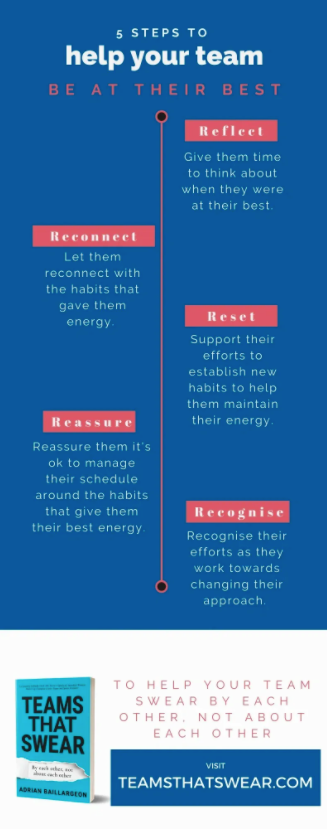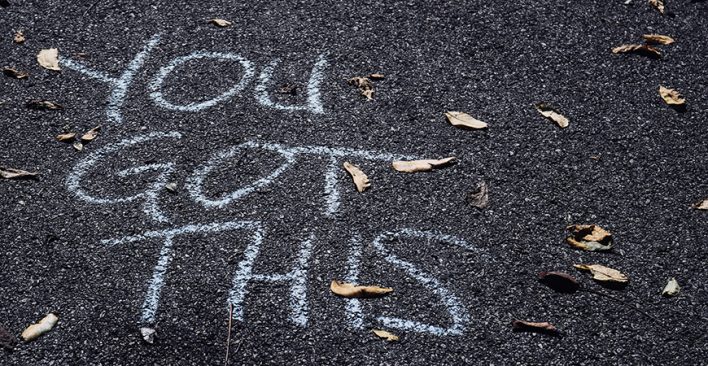How to create a competitive advantage – it is not how you think

When it comes to understanding strategy and competitive advantages, many look no further than the godfather of Porter’s Five Forces management guru Michael Porter. Porter suggests there are two ways to achieve competitive advantage – through cost and differentiation. Others examples of competitive advantage also include:
- Access to natural resources that are restricted from competitors (I don’t get this one but I read it on the internet so it must be true)
- Highly skilled labour
- A unique geographic location
- Access to new or proprietary technology
- Ability to make stuff at the lowest cost
- Brand power
While all of these make sense (except the first one, but that might just be me), none of these are possible without people. More precisely, none of these are possible without people who work well together. We have all been on low performing teams – ones feel like they are sinking. Others that spin their tyres and get nowhere. And others that are downright self-serving.
These teams do not create any sort of advantage. Having the right leadership skills to help teams shine is a meaningful competitive advantage to help drive long term success, value and impact. However, I wonder if organisations focus on the right leadership skills to navigate this new world we live in.
Leadership skills for a competitive advantage
To help your team shine, leaders need to create a high level of clarity and help foster healthy relationships. These are the two characteristics of higher-performing teams. However, like a passenger on an aeroplane, leaders must ensure they put their oxygen mask on first before they can help others.
Leadership is an art. Every leader has different experiences that have shaped them over time. Leadership is also an ongoing evolution. They have to adjust, adapt and find the way that works best for them. And the ability for leaders to put their mask on first is just as important as any other competitive advantage a company can have. To be honest, I think it is the most sustainable competitive advantage an organisation can create. And an important skill for leaders to master.
As our world continues to adapt to ambiguity, the most significant thing an organisation can do to help their leaders is to ensure they can work at their best more often than not. That, by the way, is not simply my opinion. It has been proven.
We will get to the research in a second.
The problem is, some organisations leave it up to their leaders to work out how to be at their best. “Hey, are you ok? Ok, good.” Or “Are you ok? No. Ok, make sure you take a rest.” That approach is like putting your six-year-old child in a candy store and telling them “you can have a treat, but you need to eat fruit later on.”
Of course, they are going to nod their head and agree eagerly. Are they going to make that apple a priority? Hell no. Chances are they going to come down from the sugar rush of the treat and seek out another hit of Oreo’s, snacks or some other shitty food. Unless you take the lead, remind them, ask them what they would like, and most likely cut/peel/clean the fruit for them.
I see the same issues in our workspace. Sure, we aren’t dealing with six-year-olds. But we aren’t dealing with lolly’s or fruits either.
Leaders are asked to drive growth, innovation, and customer advocacy. Do more with less. Think strategically. Operate efficiently. Be a thought leader. Grow yourself. Cut budgets. Prove yourself. Manage teams. Lead. Speak out. And do all of this with less job stability. Oh…and by the way, most people have to work on being a better husband. Or better wife. Or son, daughter, friend, community leader or tball coach.
It is no wonder burnout was recognised in May 2019 by the World Health Organisation as an organisational phenomenon. Throughout April – June, 51 percent of leaders who participated in my performance energy programs (sample size n=308 across Australia, Canada and the U.S) were NOT operating at their ideal energy levels. That’s over half of our leaders. And 65 percent of those leaders felt their teams were not working at their optimum energy levels. That does NOT sound like a sustainable competitive advantage to me.
Examples of energy as a competitive advantage
The reality is the idea of a leader’s energy as a competitive advantage is not new. Professor Theresa Welbourne from the University of Nebraska spent a good chunk of 18 years of her life researching what drove long term high performance in organisations. Over that time, she collected over a million data points.
Here is an overview of the research.
- In 1997, Theresa and her team worked with ~900 companies during their IPO stage, before they went public right through to how they were performing 10 years later.
- For the next 10 years, the research team attempted to identify what was different from those who were thriving (based on survival and stock growth) vs those who no longer existed or whose stock price declined.
- These were big and small companies. Like Yahoo. Planet Hollywood. And Abercrombie and Fitch.
- By the end of the research phase, 22 percent of the companies were thriving.
This is where it gets fascinating. The only consistent factor predicting long-term performance was not highly skilled labour, nor production cost or differentiation. The thing about access to natural resources/competitors was another left off the top of the list.
What did Professor Welbourne find as the one predictor of long-term success? Employee energy. This was the only consistent, statistically significant predictor found in the research was energy.
The companies that thrived were those whose leaders knew what their ideal energy levels were – and were able to work at those as close as possible as often as possible. Boom! And what happens when your energy levels are not at your ideal levels? I recently spoke with a senior leader from a global risk management and insurance organisation about her experience with managing the pressures of COVID.
“The thing is – during this time – the things I used to protect my energy with were immediately taken away from me. I could no longer play sports in the evening or catch up with my girlfriends for a midweek drink.”
What was her strategy to manage this unprecedented* level of ambiguity? “As a human, a worker, and a leader, I made a conscious decision to lean in. I put my hand up to help. My workload tripled within a week. It soon became apparent I wasn’t leaning in for a few days or even a week or two. It became the norm. The work and pressure were snowballing. It became harder for me to control.”
The outcome? She and her boss agreed for her to take some time to reset. Not for a day. Not for a long weekend. But for two weeks straight. “It was unsustainable. It’s like I was trapped. And the issues compounded. I was tired, so I didn’t exercise, so I felt worse. I knew what was happening, but I got in a rut. Thankfully, my manager and I both recognised it. She was very supportive of my break. I wasn’t made to feel embarrassed – it was just the right thing to do.”
Unfortunately, she wasn’t able to realise her level of activity unsustainable. She was in the red zone for too long. As a result, her judgment was clouded.
Managing your energy – the new skills for your resume
When Benjamin Franklin said “an ounce of prevention is worth a pound of cure”, little did he know he was onto something other than increasing the focus on fires safety.
Knowing what you need to do to prevent burnout should be part an effective leaders toolkit. These skills – or tools are becoming just as important as strategic thinking, financial analysis, stakeholder management and influencing.
If a leader isn’t at their best, the traditional leadership traits become compromised. And the idea of just putting in longer days is proving to be more detrimental than advantageous.
Just checking in
If you are enjoying the article and would like to receive exclusive team exercises, leadership and team development insights, I’ll put a link at the very end of this page for you to subscribe to my monthly thoughts. Or you can click here to do it now.
But please keep on reading – here as the tips on what you can do to help motivate your team by enabling their optimal energy levels are coming up soon. I have also got an infographic you can use in your own channels if you would like to spread this message.
Working harder can make you stupider
The Melbourne Institute of Applied Economic and Social Research showed brain function worked on a sliding scale. Doing no work each week was not good for the brain, but more than 25 hours a week showed a decline in the brain’s abilities. And for those of us over 40, the decline was even steeper. Doh!
The report suggested “the fatigue and stress brought on by long work hours affected the brain’s ability to process information properly and detect errors.
I’m not suggesting that we should all work 25 hours and clock off. I believe in hard work, and sometimes that means working more than ideal.
But to create a sustainable competitive advantage, leaders need to know what they need to do to work at their optimal energy levels – and ensure what they need is not compromised. These habits need to be non-negotiable, and leaders need to give themselves permission to manage their day, their week, their month….in a way that allows them to be work at their ideal energy levels more often than not. It becomes about managing one’s energy to make the most out of one’s’ time.
If this means blocking out 90 minutes, three days a week, in your day to get a walk and shower in halfway through the day, so be it. If it means having a no meeting zone from 4pm onwards, so you get out of the office by 5:30pm and back to your life, family or whatever it is you do that is important to you, lock that in.
Give yourself permission to make it non-negotiable. Or at a minimum, have the talk to see if these approaches are a possibility.
How your company can build its competitive advantage
Like the parent suggesting to their child, they need to eat healthy food following a visit to the candy store, organisations can do more than tell their people to take care of themselves.
They can talk for show. Or do for dough. The reality is – it is not hard to create this kind of competitive advantage. And it is very sustainable.
It should start at the top. Ensuring the CEO gives her (or his) executive team a chance to reflect, reconnect with what they need to be at their best and reset some habits to replenish their energy levels. By knowing what stress management strategies work for each leader, and sharing them, they then give others within the team the opportunity to keep them accountable. The conversations then need to continue.
Monthly exec meetings involve business performance reviews. Why aren’t performance “energy” reviews included on the monthly agenda? 15 minutes a month to check in with each other, reinforce what is needed and reset if need be.
According to HBR’s Cost of Meetings calculator, if your exec has ten people, the CEO is on a lazy two mil/year, and the rest of the team on an average of $400K/year, the cost of that 15-minute check-in equates to about $980/month or roughly $12K/year. $12K/year to ensure the top dogs are at their best?
My suggestion would be that the ROI would be much higher than the ROI the organisation is delivering. The CEO could even take it to the next level and splurge by talking about performance energy during her (or his) monthly 1:1’s – and reinforcing the importance of keeping non-negotiables non-negotiables.
That is how this could start. From the top. Then roll out a similar approach throughout the business.
If you are not a CEO, then start with yourself – and your team. Make managing performance energy a priority. Make it BAU. Do not tell people to have that apple after you buy them a bag of lollies, then leave it up to them to make sure they find the apple, clean it, cut it and consume it.
Help you, your leaders and their people reflect, reconnect with what they need to be at their best, and reset their habits.
Give permission to change how they prioritise their energy and their days.
And give yourself that same permission. That’s where the real change starts.
This approach will not only create clarity for the team but also strengthen relationships and help develop effective leadership skills. And the research would suggest that it will help develop that sustainable competitive advantage you are looking for. All the best, Adrian.
Cover image: Shutterstock
This article first appeared on Adrian Baillargeon blog on 14 August 2020.
If you are an internal Talent Acquisition executive for a corporate organisation, we would love to have you at our exclusive Future of Talent 2020 event series. Click to learn more and register your interest today.

Related articles
Leave a Reply
Sign up to our newsletter
Get a weekly digest on the latest in Talent Acquisition.
Deliver this goodness to my inbox!



